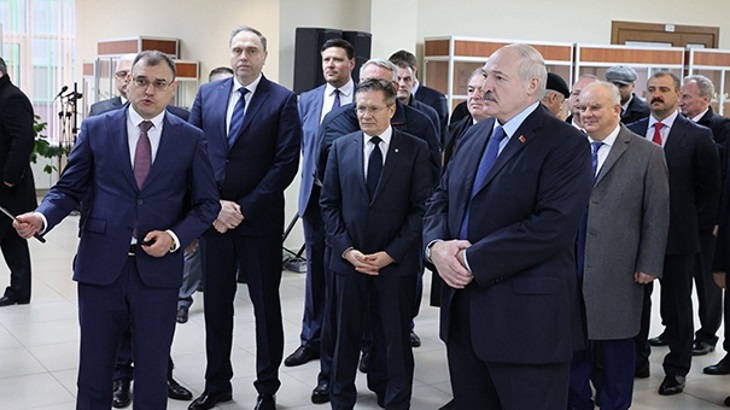"Is the area of the construction and maintenance site larger than the plant itself? I had the impression that it is almost twice as large," Lukashenko said, according to a statement on the president's website.
Energy Minister Viktor Karankevich told him that 130 different buildings and structures had been constructed and covered an area of more than 100 hectares. "With the launch of the first unit, 88 facilities will be commissioned, with the launch of the second one - 42," he added.
At the BelNPP training centre, where the President was briefed on work to commission the plant and its integration into the country's economy, he said the plant's start-up was "a historic moment" for the country.
Karankevich said the plant will produce about 18 TWh annually and enable Belarus to replace about 4.5 billion cubic meters of natural gas per year, save more than USD500 million and reduce greenhouse gas emissions by more than 7 million tonnes per year.
“The lifespan of the plant is 60 years with the possibility of extension to 100 years," the minister added. In total, more than 2500 specialists will work at the Belarusian nuclear power plant, about 60 of them from Russia and Ukraine with experience in working at nuclear power plants.
Lukashenko discussed the prospects of cooperation with Russia in nuclear energy with Aleksey Likhachov, the director general of Rosatom, who also attended the president's visit to the plant. Likhachov proposed the creation of a Rosatom subsidiary in Belarus. The possible construction of additional units at the plant and the launch of an energy-intensive manufacturing base in the region were also touched upon. In addition, Rosatom, together with the Kurchatov Institute, offered the Belarusian National Academy of Sciences to build a research reactor.
"The launch of the nuclear power plant will open up new opportunities for the national economy and will allow Belarus to develop other sectors such as electric transport. However, it is important to create our own battery," Lukashenko said. "As soon as we design our own battery for electric vehicles we will fully switch to electric [transport], ahead of other countries," he added. Another priority, he said, is converting residential heating to electricity.
Speaking to reporters during the visit, Lukashenko said opposition to the Belrusian plant by neighbouring countries was "just envy and competition". He added: "These neighbours are 10 years behind us in NPP construction. We're ahead of them, and they should admit it."
Construction of the Ostrovets plant has spurred the development of other sectors, especially the construction industry and the building materials sector, he said. It will also boost the development of environmentally friendly transport, and give the country an opportunity to reduce its consumption of natural gas.
"Many large sectors of the economy are moving forward. We have invested almost USD7 billion in our economy. If we decide to build the second plant, this will be a good stimulus for the development of the economy; a locomotive that will create momentum for many sectors of the economy," he said.
In a separate statement, Rosatom said the unit will enter the trial operation stage in late November-early December. Commercial operation is scheduled for the first quarter of 2021.
Rosatom subsidiary Atomenergomash is the supplier of key equipment for the nuclear island for the Belarusian NPP. Its fuel assemblies were manufactured by TVEL at the Novosibirsk Chemical Concentrates Plant, with enrichment level of between 1.3% and 4.4%.





_18570.jpg)
_18938.jpg)
_33584.jpg)
_82983.jpg)





